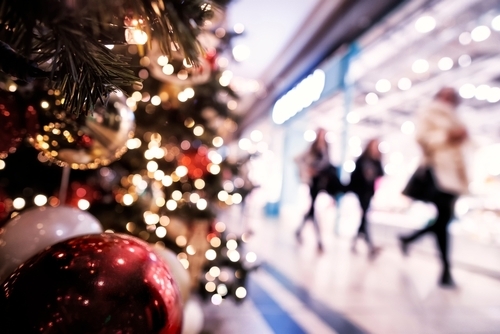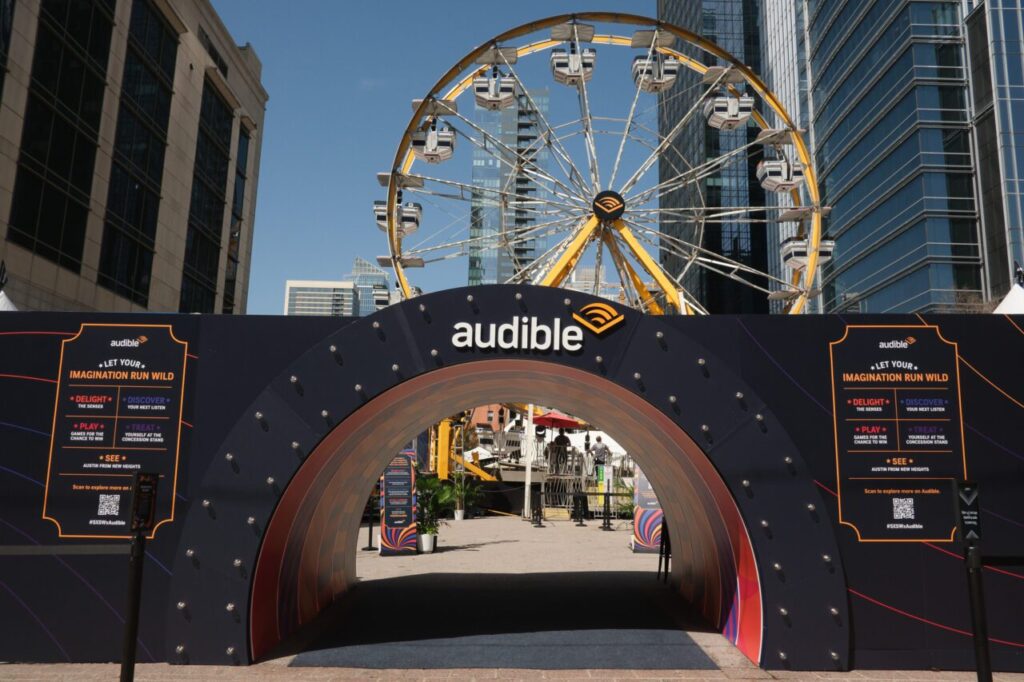While we can’t technically proclaim that adtech has come to a close, since the exhibit hall closed before the full conference concluded, most in our space have returned back to engage in the classic post show processes – shuffling through business cards trying to match a name to a face or reason, prioritizing those they do recall to start the follow-up process, and organizing the inbox – cleaning up threads started on blackberry’s plus dealing with the countless other emails, scattered throughout, that remained unopened waiting for their time in the preview pane. For us, the end of the show, also means trying to make sense of a show that, like the Internet advertising industry as a whole, continues to expand, continues pushing the upper bounds (in this case physical), and instills a feeling of wonder and worry at the suburban sprawl of it all. After two days at the Hilton, time spent between the two hubs of activity, the show floor and the hotel bars, the following came to mind about adtech New York City 2007.
- Layout – Let’s state the obvious now; the physical environment no longer supports the needs and wants of its users. Or, more succinctly said, it’s a mess. The main floor has low ceilings, narrow spacing between booths, too many rooms, and feels more like a maze than a show floor. Those upstairs enjoyed a better physical space; they had room to breath, but not the people. Like a celebrity that gets stopped wherever they go, making it upstairs meant still having a commitment to your location after countless introductions and conversations with old acquaintances inadvertently determined to veer you off course. At its current location, Ad:tech NYC will never have the order that the San Francisco show has, but somehow this almost works to its advantage; like New York City itself, the show makes due with the room it has, and provides a sense of adventure that you won’t find at a venue more suiting its size. That said, if they decide to change it, no complaints from our end.
- Bring the Redbull – Ad:tech, especially the NYC show is some of the hardest fun you can have; not many other occasions allow you to have a drink in the early afternoon and still call it doing business. Similarly, I can’t imagine many other places where you can also talk of going out and partying and not sound as though you don’t have a focus on work. Drinking during the day and partying on a weeknight are as much part of the reward as they are part of the job. Like a professional athlete you have to be on your game for long periods of time, wear your body and mind down, and then be able to do it again the next day with limited time to recover.
- Familiarity – continuing on the topic of presence, this year, the second time I can remember that used up all three floors, felt like a time machine; similar to the comfort of seeing a sea of red Casale bags, walking in and finding Valueclick sprawled along the right or Friendster positioned upstairs like a long bar in the hallway, wandering around feels less like wandering and more like returning to the town in which you grew up – the balance between old and new, places you can count to still exist along with that feeling bordering between interest and unease at seeing the changes that have transpired in the time between visits.
- Determining differentiation – There are thousands of companies in the Internet advertising space, and more than three hundred ponied up the not insignificant fee to have a booth at this show. I love the show floor. While we operate in a virtual world, the show floor makes our world more real, providing a visual representation of the landscape. With so many companies presenting, the challenge becomes understanding the difference between them all. Much like a museum, there is really too much too see even though we had two days to do so. For the companies, they might want to consider the show floor a form of branding. They will meet some new client, but that as the goal might not give them the return they want. As Casale can probably attest, the value comes not from the first show but once people have your name in the back of their minds.
- Old and new – As mentioned above, some aspects of the show felt like coming home. Instead of familiar restaurants and stores, the show offers booths and people. And, when it comes to the people, for such a big industry, the show often feels incredibly small. On more than a few occasions, I heard someone saying, “I couldn’t walk five feet without running into someone I knew.” It happened to me, but at the same time, it also felt so new. While I recognized many people, often people I’ve never met but whose face has become a familiar site at the shows, this show seemed to have so many new faces. There is a whole new generation attracted as many of us were when we joined years ago. Many of them ironically enough work for companies founded by those who made it big during the initial online ad boom, who got out in time, and waited patiently to repeat the process.
- Ancillary services – This year’s show marked the first that I can recall seeing companies not directly related to the space decide to have a presence, e.g. legal services. We so often think of the show as a place to find new customers, to service our existing ones, and/or to learn about new technologies. We don’t necessarily think of it as a place to find good accounting advice or other business services. I’m glad these companies decided to take a chance as it reminds of the education conferences that have ad companies attending; they weren’t part of the plan, but they help those in attendance by being there.
- Measuring the pulse – With so many companies, the show should offer a good opportunity to glean what is really happening in the industry; the types and number of companies, in a certain sector, with booths do tell us something, but not as much as we might hope. As it is as much about branding as anything else, it’s not necessarily the interesting companies that occupy the best placements, just those with money for a presence. Unlike shows in other industries, ad:tech is not necessarily known for product launches or companies appearing for the first time; more than a few do, but it’s easy for any in particular to get lost among the 324 other booths.
- Google – never one to have an enormous presence, more an obligatory one, Google seems to enjoy showing off by making some announcement associated with the timing of the show but not the show itself. Last year, they did so with an unexpected but quite significant quality score update. Luckily for those who rely on their traffic, this year’s announcement didn’t impact their spending; instead it looks to shake up someone else’s industry, the much maligned (from a consumer perspective) mobile phone one.
Ad:tech NYC is a show that for many reasons succeeds despite itself; like the industry it encompasses it has not only momentum but a strong wind at its back. Regardless of the headaches and the gripes, it’s one that has us ready to come back.
 Network
Network

